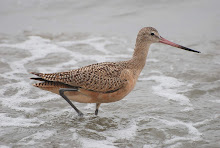
These are Sandhill Cranes. I photographed them a month ago, not far from where I now sit in the shadow of Parliament Hill, the US Embassy, or the Gatineau Hills (depending on where the sun happens to be at any given moment). I saw them as they began drifting down to find their evening roost at the back of a stubble-covered corn field, silhouetted against a blazing sky. They are awkward, ungainly creatures by most standards, with the sort of grace that cartoonists exploit to great advantage. Their resemblance to the prehistoric skeletal remains of their distant dinosaur ancestors - or what we assume those creatures must have looked like - can be startling, especially when they are viewed in the failing half-light of late October, through wraiths of freezing vapour seeping out of freshly turned black soil. These four kited down to join an already-assembled flock of forty more, all of which had remained invisible until their presence was betrayed by the new arrivals. With much croaking and agitated flapping of wings, the flock offered an edgy greeting, although there appeared to be plenty of mud and stubble to go around. The newcomers had disrupted some sort of "settling in" event, and the mysterious symmetry of the larger group, understood only by them, fell in to a shambles of discord. Only an extended period of squawking and stalking about indignantly could put matters right, and the birds set to it, dutifully. Eventually the dynamic was restored. They all settled in again, and as one began moving methodically eastward across the muck, stalking, probing, raising their massive wings, then stopping to consider their circumstances, check the air, perhaps do a bit of gratuitous croaking. The four new arrivals, having been fully assimilated into the flock, were now indistinguishable. Their places in this particular hierarchy of crane-ness had been established, and harmony had been restored. If anyone was put out as a consequence of being moved down a notch or two on the pecking order, it was not evident. Ultimately, the addition of a few more birds was advantageous to the group - more eyes and ears to look for danger, more feet probing the ground for food that could benefit everyone, and more potential targets for the predator that would only need one bird to satisfy its hunger. They are tremendously primitive creatures.

No comments:
Post a Comment